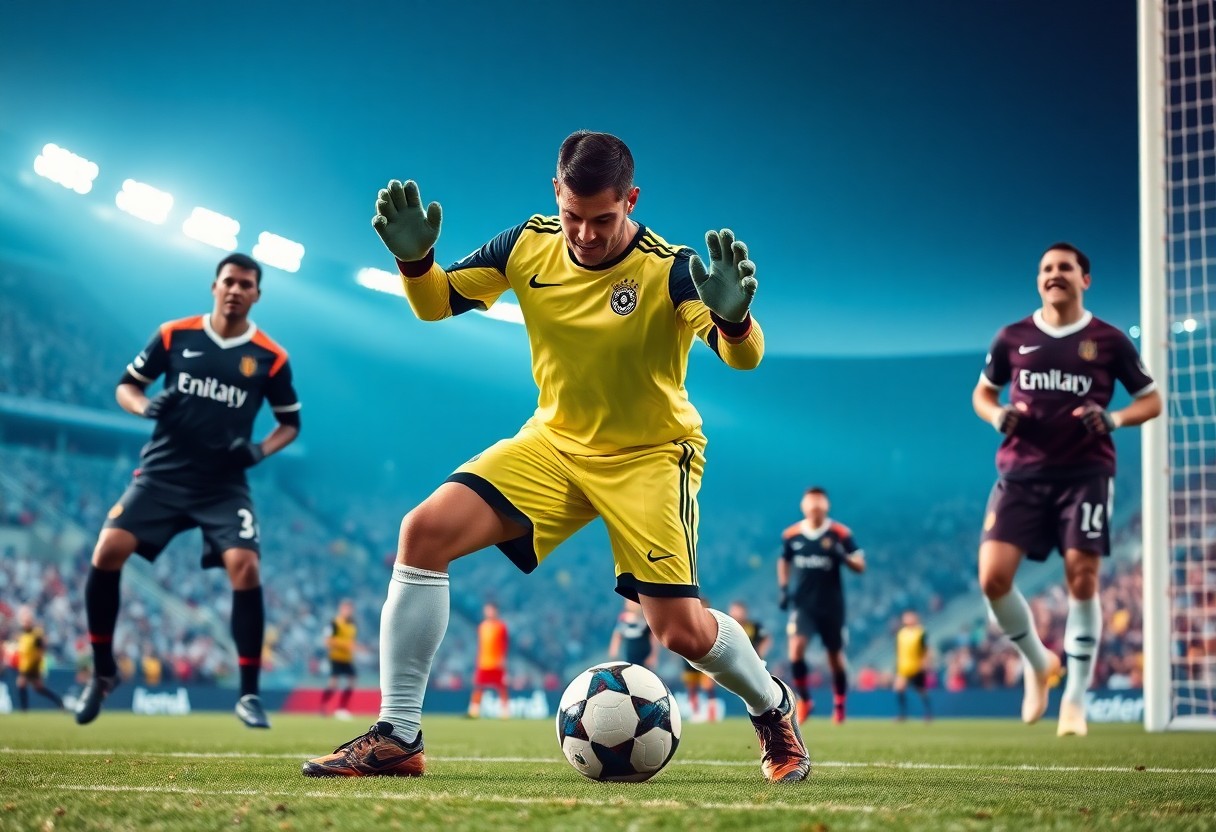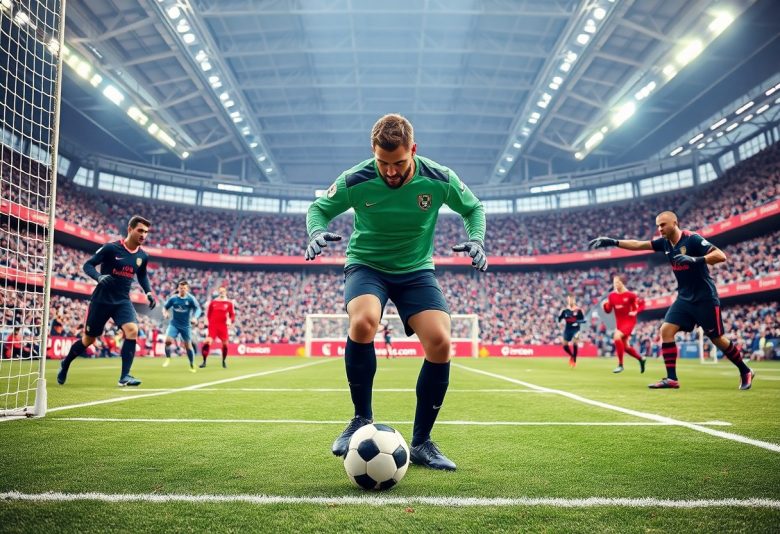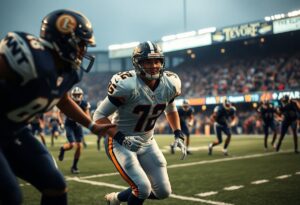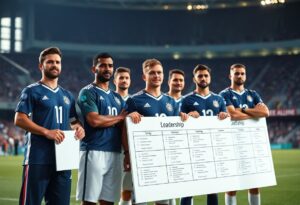Just as the game of football has evolved, so too has the role of the goalkeeper. You may find yourself surprised by how today’s keepers are not only tasked with preventing goals but are also increasingly becoming vital players in initiating attacks. This transformation from traditional shot-stoppers to dynamic playmakers has reshaped tactical approaches on the pitch. In this blog post, you will explore the historical context, key changes in training methods, and the modern expectations of goalkeepers, providing you with a deeper understanding of how their influence extends far beyond the goal line.
Historical Perspective
Before the modern era of football, goalkeepers were primarily viewed as the last line of defense, focused solely on stopping shots rather than influencing play. Their role was restricted to blocking attempts at goal, often leading to a conservative approach that saw them remain largely isolated from the rest of the team’s dynamics. As football evolved, so too did the expectations around what a goalkeeper could offer the game.
The Role of Traditional Goalkeepers
The traditional goalkeeper was mainly tasked with shot-stopping and commanding the penalty area. You would see them primarily focused on reactive skills, with little emphasis on ball distribution or participation in build-up play, which limited their impact on overall team strategy.
Key Milestones in Goalkeeping Evolution
By the late 20th century, the role of the goalkeeper began to shift as gameplay transitioned towards a more possession-oriented style. The introduction of new training techniques, tactical innovations, and the growing importance of playing out from the back marked significant milestones in the evolution of goalkeeping, reshaping how you view their contributions on the pitch.
Considering these milestones, the game witnessed goalkeepers adopting roles that extended beyond mere shot-stopping. The introduction of the sweeper-keeper concept, popularized by legendary figures like Manuel Neuer, changed the way you anticipate a goalkeeper’s involvement in attacking play. This evolution not only broadened the goalkeeper’s skill set but also transformed their tactical importance, allowing you to see them as integral playmakers who can dictate the tempo and shape of matches.
The Modern Goalkeeper
One of the most fascinating aspects of football today is how the role of the goalkeeper has transformed. You are no longer just a last line of defense; instead, your responsibilities now extend into playmaking, with footwork and decision-making becoming crucial components of your game. Modern goalkeepers are expected to actively contribute to ball possession and team dynamics, blurring the lines between a traditional shot-stopper and a tactical playmaker.
Shot-Stopping Skills
Along with adapting to new responsibilities, you still need to possess exceptional shot-stopping skills. Modern challenges require you to react swiftly to a variety of shots, whether they come from close-range or long-distance. Training focuses not only on reflexes but also on positioning, diving techniques, and understanding your opponents’ tendencies to make those game-saving stops.
Distribution and Playmaking
Around the game, the emphasis on distribution has become a defining characteristic of modern goalkeeping. You are expected to initiate attacks with precision passing, whether it be through short passes to defenders or long throws and kicks that quickly transition play into the attacking third. Your ability to remain calm under pressure while making split-second decisions is vital to your team’s success.
But being a playmaker goes beyond simply distributing the ball; it also involves reading the game and anticipating the opposition’s movements. You must analyze the pitch quickly and understand when to play safely or take risks with your distribution. Modern goalkeepers are not just safeguarding the net; you are crucial in determining the tempo of the game and can turn defensive situations into attacking opportunities with your vision and skill.
Tactical Adaptations
Assuming you analyze modern football, you’ll notice that goalkeepers have adapted to a more tactical role that goes beyond mere shot-stopping. Today’s goalkeepers are integral to their teams’ tactical setups, facilitating ball movement and contributing to the overall game strategy. By mastering distribution, they not only provide options for defenders but also play a pivotal role in transitioning from defense to attack, thereby reshaping the dynamics of the match.
Goalkeepers in Modern Formation
With the evolution of football formations, your goalkeeper is increasingly expected to participate actively in the build-up play. Whether it’s playing out from the back or executing quick throws to initiate counter-attacks, your goalkeeper’s ability to read the game and distribute effectively is now paramount. This enhances your team’s fluidity and creates new attacking opportunities.
Influence on Team Dynamics
About the role of goalkeepers in team dynamics, their presence often sets the tone for the entire squad. A confident goalkeeper can instill trust among defenders, allowing them to maintain a higher line and engage more in build-up play. Conversely, your goalkeeper’s decisions can impact the collective mindset, encouraging proactive tackling and positioning from the team.
Influence extends beyond just defensive strategies. When you have a goalkeeper who is adept with their feet, you create an environment where players feel enabled to express themselves. This confidence can lead to better communication among your players, fostering a cohesive unit that works together both in defense and attack. This transformation in the goalkeeper’s role not only elevates the individual’s performance but also enhances your team’s overall capability.

Famous Playmaker Goalkeepers
Unlike traditional goalkeepers who primarily focused on stopping shots, modern playmaker goalkeepers like Alisson Becker and Ederson have transformed the role, excelling in ball distribution and playing a pivotal part in their teams’ build-up play. These exceptional players have redefined expectations, using their vision and distribution skills to initiate attacks, thus shifting your perspective on what it means to be a goalkeeper.
Case Studies in Modern Goalkeeping
An analysis of prominent goalkeepers demonstrates their impact on the game. Here are some key case studies:
- Alisson Becker (Liverpool) – 22 clean sheets, 152 successful passes per match in the 2021-2022 season.
- Ederson (Manchester City) – 19 clean sheets, 75% pass completion rate, 6 assists in 2020-2021 season.
- Marc-André ter Stegen (Barcelona) – 15 clean sheets, 222 accurate long passes in 2021-2022 season.
- Jan Oblak (Atletico Madrid) – 16 clean sheets, 80% save percentage while contributing to 90 progressive passes.
Impact on the Game
Impact goes beyond the statistical contributions of playmaker goalkeepers. They change the dynamics of football, forcing you to reconsider formations and tactics. Their ability to effectively connect with defenders and midfielders allows for fluid transitions and immediate threat creation. As their influence unfolds, you witness an evolution where goalkeepers are no longer just the last line of defense, but an integral part of your team’s offensive strategies.
And this shift in responsibility has led to more teams adopting pressing styles and high defensive lines, emphasizing the importance of a goalkeeper’s skill set that includes not just shot-stopping, but also passing accuracy and decision-making under pressure. Embracing this evolution accentuates the multidimensional nature of modern football and prepares you to advance further into tactical analyses.
The Future of Goalkeeping
For modern goalkeepers, the future promises a transformation that embraces their role as playmakers within the team. As the game evolves, you will witness the need for versatility, creativity, and a refined skill set that goes beyond traditional shot-stopping. Emphasizing anticipation, tactical awareness, and superior technical abilities, the next generation of goalkeepers will redefine their importance on the pitch.
Technological Innovations
An array of technological innovations is set to redefine how you train, analyze performance, and enhance your skills. Advanced training tools, including virtual reality and data analytics, provide you with insights into your game like never before. Wearable technology can track your movements and decision-making processes, helping you improve in real-time. These innovations empower you to refine your technique and strategic thinking on the field.
Emerging Trends and Skills
Across the football landscape, new trends and vital skills are emerging within the role of the goalkeeper. As teams increasingly prioritize ball distribution and intelligence, you need to develop an understanding of your teammates’ movements and anticipate plays. Additionally, skills such as refined passing techniques, effective communication, and the ability to read the game become paramount. The emphasis is shifting towards being an active participant in build-up plays, where your input is critical to shaping the team’s attacking strategies.
In addition to traditional goalkeeping skills, you must build a diverse skill set that features both technical and tactical elements. The modern goalkeeper needs to cultivate excellent footwork to execute accurate passes, exhibit vision when reading the game, and enhance communication skills to direct defenders effectively. This holistic development not only amplifies your contributions on the field but also cements your role as a central figure in the team’s strategy and execution. With this evolving landscape, adapting to new trends will be vital for achieving success in your goalkeeping journey.
Conclusion
So, as you reflect on the evolution of goalkeepers from mere shot-stoppers to dynamic playmakers, it’s clear that the role has transformed significantly. Understanding this shift can enhance your appreciation of the game’s strategy and the skill set required from modern goalkeepers. You now recognize that these athletes are not only guardians of the goal but also integral to their team’s overall tactical approach, enabling fluid transitions and creating scoring opportunities. Embrace this evolving aspect of football for a deeper insight into the beautiful game.




